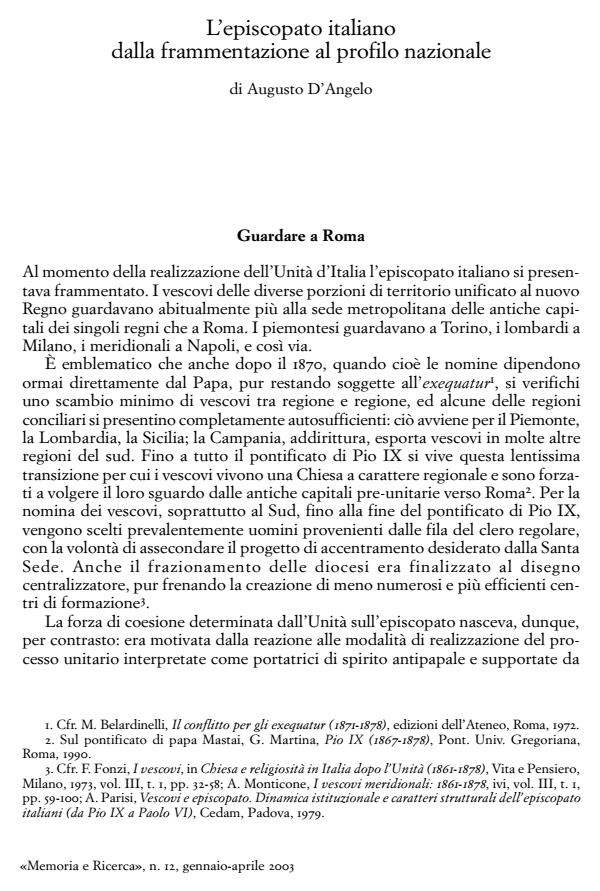L'episcopato italiano dalla frammentazione al profilo nazionale
Journal title MEMORIA E RICERCA
Author/s Augusto D'Angelo
Publishing Year 2003 Issue 2003/12
Language Italian Pages 18 P. File size 234 KB
DOI
DOI is like a bar code for intellectual property: to have more infomation
click here
Below, you can see the article first page
If you want to buy this article in PDF format, you can do it, following the instructions to buy download credits

FrancoAngeli is member of Publishers International Linking Association, Inc (PILA), a not-for-profit association which run the CrossRef service enabling links to and from online scholarly content.
The Author analyses the itinerary which brought the Italian Bishops away from the fragmented situation characterising them the outset of the Italian Unity, towards a new, Unitarian national profile. The process which made Bishops converge to Rome and distance themselves from the former pre-Unity capitals, took place un-der the guidance of the Holy See, along with the process of ecclesiastic centralisa-tion stressing the role of the pontiff as leader of the Italian Church, at least until 1978. Such a process reached its apex with Pius XII. Albeit not linearly, the church structure seemed to follow the same process undergoing within the State. Staffing Southern Dioceses with priests coming from Northern Italy is an example. During the Twentieth Century, thrice the Pope was from Lombardy (Pius XI, John XXIII and Paul VI), while the top hierarchy of the Italian Bishop’s Conference never en-listed a Southerner as President or Secretary-General. With the pontificate of John Paul II, we begin to see a Unitarian national episcopate, with proper structures, in-stitutions, resources and financing means.
Augusto D'Angelo, L'episcopato italiano dalla frammentazione al profilo nazionale in "MEMORIA E RICERCA " 12/2003, pp , DOI: